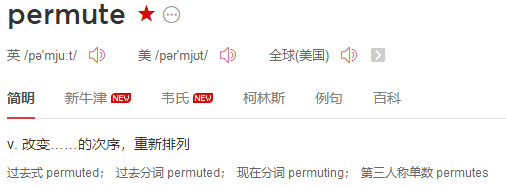

TypeError: If positional arguments are passed and this Layer is not a subclassed Model.Īdd loss tensor(s), potentially dependent on layer inputs.ValueError: in case the layer is missing shape information for its build call.**kwargs: Additional keyword arguments to be passed to call().In other cases, Layer inputs must be passed using the inputs argument and non-inputs must be keyword arguments. Only allowed in subclassed Models with custom call() signatures. *args: Additional positional arguments to be passed to call().inputs: Can be a tensor or list/tuple of tensors.This is done as part of _add_inbound_node().
Tf permute update#
We update the _keras_history of the output tensor(s) with the current layer.

If necessary, we build the layer to match the shape of the input(s). If a Keras tensor is passed: - We call self._add_inbound_node(). Wrapper around self.call(), for handling internal references. See help(type(self)) for accurate signature. Returns the list of all layer variables/weights. Scope_name trainable_variables trainable_weights updates variables


When using graph execution, variable regularization ops have already been created and are simply returned here. Note that when executing eagerly, getting this property evaluates regularizers. Losses which are associated with this Layer. AttributeError: if the layer has no defined input_shape.Input shape, as an integer shape tuple (or list of shape tuples, one tuple per input tensor). if it is connected to one incoming layer, or if all inputs have the same shape. Only applicable if the layer has exactly one input, i.e. Input mask tensor (potentially None) or list of input mask tensors. Only applicable if the layer has exactly one inbound node, i.e. Retrieves the input mask tensor(s) of a layer. AttributeError: If no inbound nodes are found.AttributeError: if the layer is connected to more than one incoming layers.Retrieves the input tensor(s) of a layer. Optional regularizer function for the output of this layer. Output shape: Same as the input shape, but with the dimensions re-ordered according to the specified pattern. Use the keyword argument input_shape (tuple of integers, does not include the samples axis) when using this layer as the first layer in a model. For instance, (2, 1) permutes the first and second dimension of the input. Permutation pattern, does not include the samples dimension. # now: model.output_shape = (None, 64, 10) Permutes the dimensions of the input according to a given pattern.


 0 kommentar(er)
0 kommentar(er)
